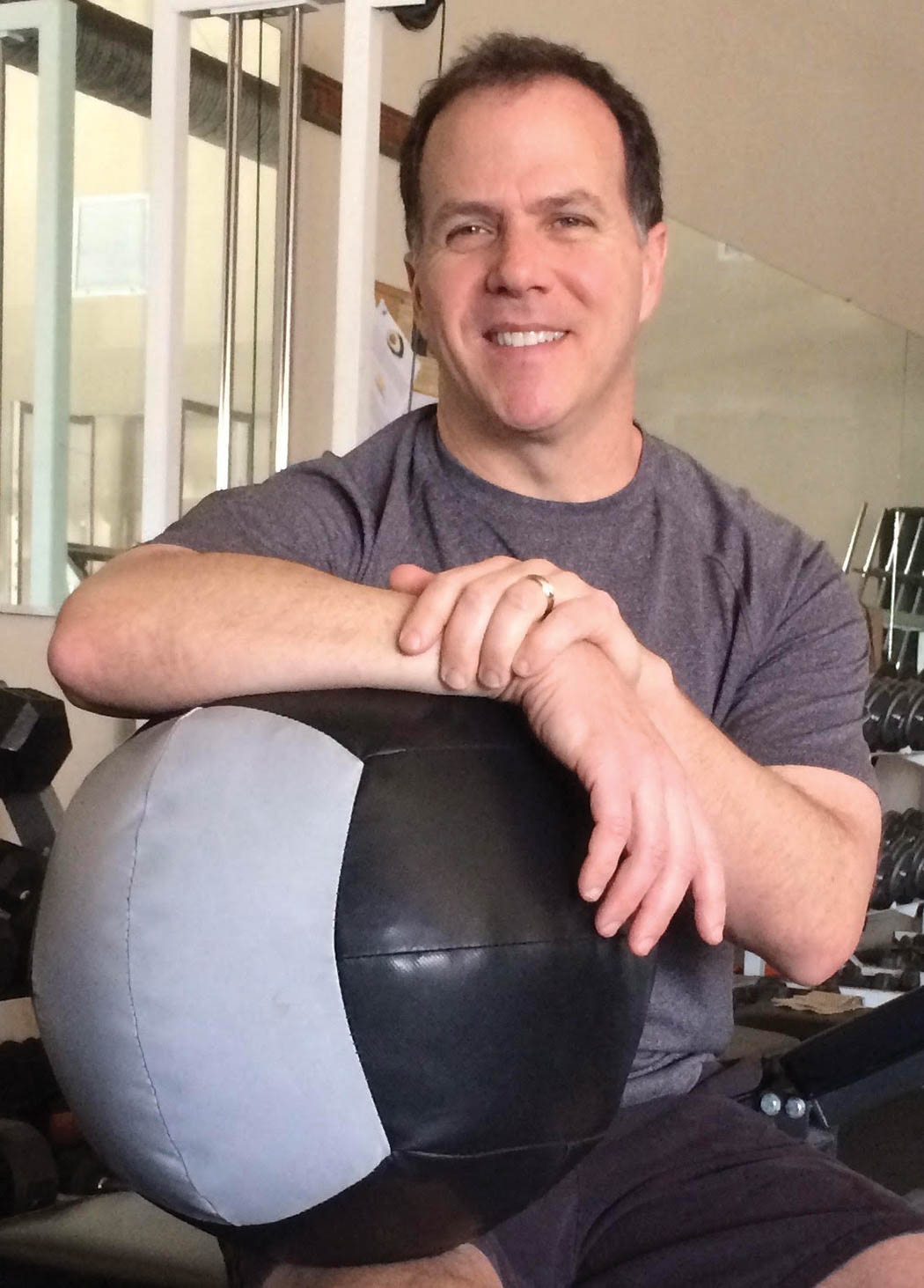The Science Behind Motivation

I’ve practiced nearly 2,000 hours of Pilates since 2012, and I started teaching in 2014. Becoming a teacher trained my eyes and ears in a new way. Observing a wide range of clients’ moods, thought patterns and responses made me more creative in preparing and teaching clients of all ages and fitness levels.
During this time, I became more curious — what’s going on in our heads when it comes to moving our bodies? Does it matter what we think? What mental skills do we need to get what we want from our workout?
Personal trainer Alan Chasen, the owner of Chasen Fitness, began his 35-year career in 1987 while studying kinesiology at The University of Texas at Austin. While working out in Gregory Gymnasium, buildings around it were being re-roofed with asphalt and tar, sending fumes through the windows of the then-unairconditioned building. So he went a few blocks north of campus to Hyde Park Gym where he met then-owner Mike Graham.

Photo courtesy of Alan Chasen
Chasen credits Graham with helping him develop in two meaningful ways — first, to question everything about fitness trends, and second, to train the person, not just the body.
“Where people are personally coming from is more important than what they are doing in the gym,” Chasen says. “What I do every day with everybody is watch and read their body language. What energy are they bringing? I don’t necessarily want to match their temperature. I may want to be a little above it or below.”
Knowledge about exercise and what’s good for us doesn’t change our behavior, Chasen says, but what we believe about our abilities and goals will.
“When someone believes (that) what they do in the gym will help them, it adds to the foundation we are creating,” Chasen says.
The more I hear about clients’ mind-body connections, the more questions I have. Do we exercise and then feel better? Or do we feel better about ourselves and then exercise?
What We Think and Feel Determine What We Do — Or Don’t Do
How does our brain change our body? With our thoughts.
Hillary Cauthen, CMPC is an Austin-based clinical sports psychologist, and her clients range from youth athletes to The University of Texas women’s softball team to Austin FC. Cauthen says our brain sets the tone for how our bodies respond to movement and exercise and answering two questions reveals the source of our motivation and resistance.
“Why do I want to move my body? Why do I want to start moving my body?” Cauthen says. “That taps into the motivation source, (which) affects how we show up, (are) engaged and do our workout.”

Photo courtesy of Hillary Cauthen
Our motivation to exercise is usually intrinsic or extrinsic, or a combination. Intrinsic motivation grows from our desire to pursue an activity for pure enjoyment; extrinsic motivation grows from our desire to achieve an external goal or validation from another source. When we’re extrinsically motivated, we seek the feeling that we believe the goal will bring.
“When we solely rely on extrinsic motivation, we risk having negative thoughts about our workout and don’t find enjoyment,” Cauthen says.
Our extrinsic motivation may tango with our internal resistance. That may be why we buy a new membership, start a new activity or class, go for a month and stop. If the motivation is solely extrinsic, staying with a new activity demands more mental effort to generate motivation and the feelings we need to drive our behavior.
“Our thoughts always lead to our feelings, our desire and what we do,” Cauthen says.
Even when we overcome resistance and work out, we want to notice the thoughts and feelings we bring to the movement we do.
“We hold tension in our body when we feel doubt,” Cauthen explains. “When we are tense in our bodies, we don’t get the movement we want.”
So, then what? Cauthen coaches her clients through three phases of their training with an overarching question: What emotional state should I be in to have my best workout? It varies from each person, depending on their “individual zone of optimal functioning,” a model sports psychologists use that presumes the relationship between emotions and optimal performance.

“I’m a huge proponent for feeling your feelings,” Cauthen says. “It’s one of the catchiest taglines. We have to feel our feelings and then make meaning of our thoughts. So even though the thought comes first, we identify feelings because they are far more powerful.”
When we know the feelings that motivate us, then we can create self-talk to keep us in our zone. Self-talk is either informational or motivational.
“Motivational self-talk fuels the emotional output,” Cauthen explains. “That allows your body to be more relaxed in that energy zone for performance.”
Our self-talk also affects how we feel emotionally and physically after our workout.
“We rationalize our thoughts post-workout,” Cauthen says. “If we’re positive going in, we have a much more positive reflection.”
Self-Coaching Skills for All
You don’t need to be an elite athlete to benefit from self-coaching. To improve performance, we can practice a few simple skills:
- Know your reasons for working out
- Observe and feel your feelings
- Reflect on what you did
Allowing five or 10 minutes for self-coaching can make a difference in how you feel going into your workout and evaluate your efforts afterward. Self-coaching tools help create awareness and understanding of our thoughts and emotional state as well as the consequences of our behavior and its effects on us. The practice may look like this:
Circumstance: Your workout (HIIT class, 30-mile road ride, Barre class)
Thought: What’s your dominant thought about your workout today?
Feeling: How does your body feel when you think about your workout?
Action: What do you do when you feel that way? What are you not doing when you feel that way?
Result: What’s the result of your thought, feeling and action?
Feeling unmotivated is a common feeling when it comes to working out. In this case, we can use this model to ask ourselves what we’re thinking that might be creating the feeling of “unmotivated?” Then, we can practice a skill that gives equal attention to the opposite thought. Coaches call this “equal airtime.” If we’re going to believe that we don’t want to go, can we take a minute to consider the opposite? The truth is, “feeling motivated” may not be what’s necessary to get to our workout. We may simply need to generate something else — curiosity, optimism, determination or possibility.
Cauthen says feelings are the foundation of our thoughts and behavior. When we pay attention to how we feel when we think about our sport, workout or other activities, then we create a valuable skill to improve our performance.
“Starting is the hardest process, but if we start, reflect and then do it again, eventually, we find what feels best for us,” Cauthen says. “It doesn’t have to be the hardest fitness class or training for a marathon. It just has to be moving your body and enjoying that, because healthy hearts and healthy minds are what we aspire to have.”
About the Author

Laura Bond Williams is a certified Pilates teacher and professional life coach helping clients discover new ways of moving through life with ease and awareness. She loves a good Broadway dance class or “Thriller” flash mob and is happy to take the stage anywhere, from the Long Center to a parking lot.






